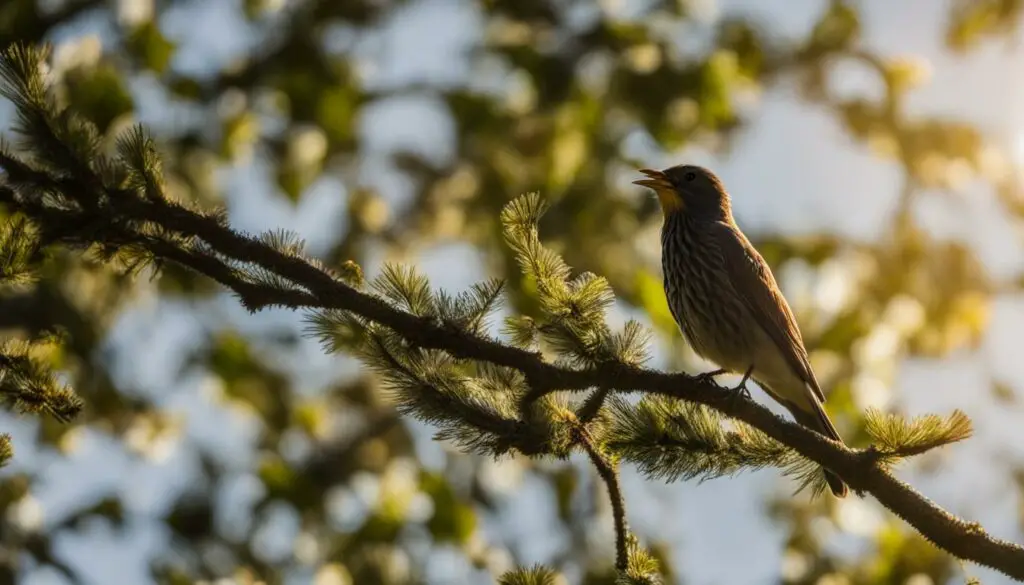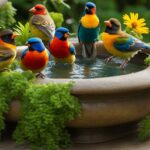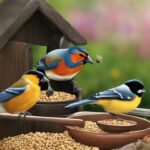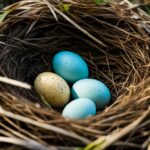Moulting is a natural process in which birds shed old feathers and replace them with new ones. During this time, providing proper care is essential to ensure healthy feathers. In this expert guide, I will share valuable tips and advice on bird molting season care, including feather care, diet recommendations, and best practices for supporting a molting bird.
Key Takeaways:
- Feathers play a vital role in flight, insulation, protection, and attracting mates.
- Understanding the molting process and types of molt in birds is crucial for proper care.
- Factors like photoperiod, temperature, diet, and hormonal fluctuations affect the molting process.
- Signs of molting include a ragged appearance, pin feathers, and changes in behavior.
- Proper care involves misting, rest, avoiding petting, and maintaining the right temperature.
Understanding the Molting Process in Birds
The molting process is a natural phenomenon in birds that involves the replacement of old, worn-out feathers with new ones. Feathers are composed of keratin, a protein similar to our hair and nails. They serve multiple purposes, including flight, insulation, protection, and attracting a mate. Understanding the molting process is crucial for providing the right care and support during this period.
Feathers go through a growth cycle, which includes the molting phase. This involves the gradual replacement of old feathers with new ones. The molting process varies in duration and frequency depending on the species and individual bird. Some birds molt once a year, while others molt twice or more. Molting can occur in specific seasons or throughout the year.
To support the molting process, birds require a balanced diet that provides the necessary nutrients for feather growth. The replacement of feathers requires energy and resources, so it’s important to ensure that birds have access to a diet rich in proteins, vitamins, and minerals. Additionally, providing a stress-free environment with adequate lighting and temperature can contribute to healthy feather growth during molting.
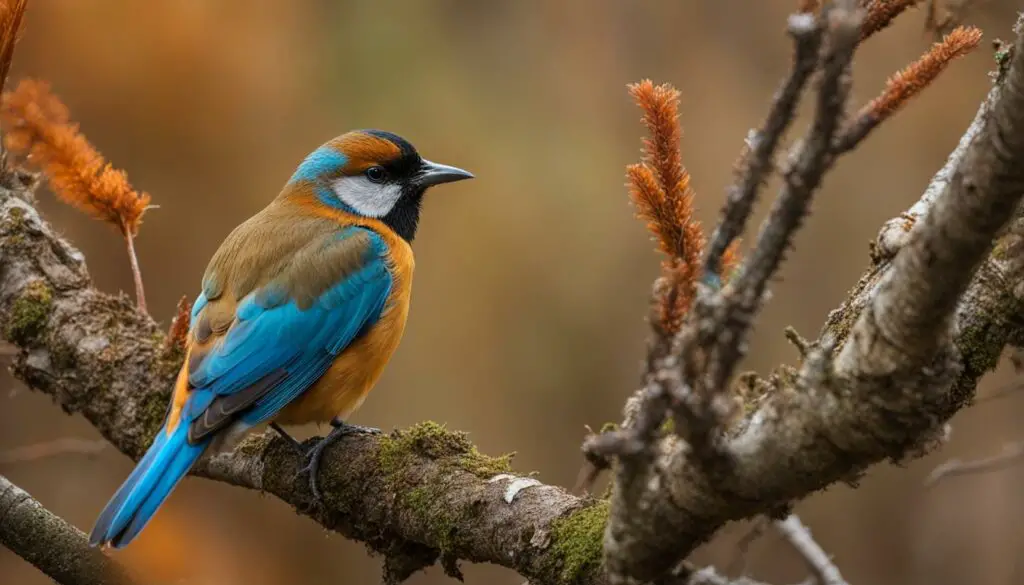
Feather Growth Cycle:
| Phase | Description |
|---|---|
| Growth Phase | New feathers grow from specialized cells at the base of the feather follicles. |
| Mature Phase | Feathers reach their full size and strength. |
| Molting Phase | Old, worn-out feathers are shed, and new feathers begin to grow. |
During molting, birds may exhibit various signs, including a ragged appearance as old feathers are shed and new ones grow in. They may also display the presence of pin feathers, which are new feathers covered in a protective sheath. These pin feathers can be sensitive and require extra care. Some birds may experience changes in behavior, such as increased restlessness or reduced activity.
Understanding the molting process in birds is important for providing appropriate care and support during this natural phase. By ensuring a nutritious diet, a stress-free environment, and regular observation, bird owners can help their feathered friends have a successful molting season and maintain healthy, vibrant feathers.
Types of Molt in Birds
During the molting process, birds can undergo different types of molts. These molts can vary in terms of which feathers are replaced and the duration of the molt. The three main types of molts are:
- Partial Molt: This type of molt occurs when only certain feathers are replaced. It usually takes place during late winter or spring. The old feathers gradually fall out and are replaced with new ones.
- Complete Molt: In a complete molt, all the feathers on the bird’s body are replaced. This happens over several weeks, and the bird may temporarily lose its ability to fly. During this period, new feathers grow in to replace the old ones.
- Complex Molt: A complex molt is a combination of partial and complete molt. Some feathers are replaced partially, while others go through a complete molt. This type of molt is common in certain bird species.
The type of molt a bird undergoes depends on various factors, including the species and environmental conditions. While the molting process can be a challenging time for birds, providing proper care and support can help them go through the molt successfully and grow healthy new feathers.
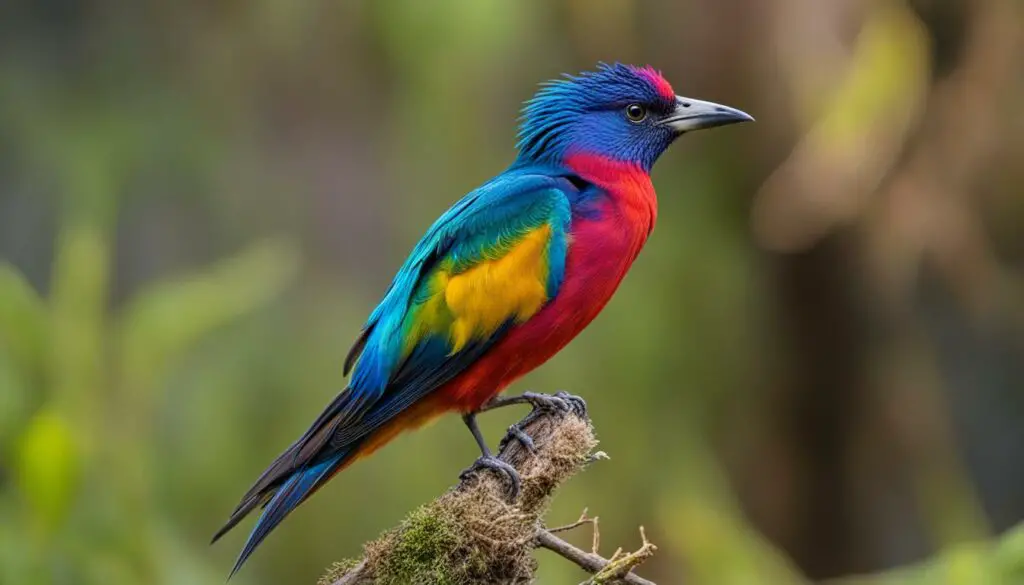
Feather Regrowth Timeline
The timeline for feather regrowth during molting can vary depending on the species and individual bird. In general, the process of feather regrowth follows a sequence. First, the large flight feathers, such as those in the wings and tail, are replaced. Then, the smaller feathers on the body, head, and neck are molted and replaced. Finally, the feathers on the legs and feet are replaced.
It is important to note that molting is an energy-intensive process for birds. Providing a nutritious diet and maintaining a stress-free environment can support the bird’s overall health and help facilitate feather regrowth. Regular observation and veterinary check-ups can also help identify any potential issues during the molting process.
| Type of Molt | Feathers Replaced | Duration |
|---|---|---|
| Partial Molt | Only certain feathers | Late winter or spring |
| Complete Molt | All feathers on body | Several weeks |
| Complex Molt | Combination of partial and complete molt | Varies depending on species |
Factors Affecting the Molting Process
During the molting process in birds, several factors can influence the timing and duration of feather replacement. These factors include photoperiod, temperature, diet, and hormonal fluctuations.
The length of daylight, known as the photoperiod, plays a significant role in triggering molting. Birds rely on changes in daylight hours to signal the start of the molting season. As the days become shorter or longer, depending on the species, it signals to the bird’s body to begin the process of shedding old feathers and growing new ones.
Temperature is another important factor in the molting process. Birds require a stable and comfortable temperature to support feather growth. Extreme heat or cold can disrupt the molting cycle and negatively affect feather quality. Maintaining an optimal temperature in the bird’s environment is crucial for a successful molting season.
Diet also plays a vital role in supporting the molting process. Birds require a balanced and nutritious diet to provide the necessary building blocks for feather growth. A diet rich in high-quality proteins, vitamins, minerals, and essential fatty acids promotes healthy feather regrowth. Additionally, providing a variety of fresh fruits and vegetables ensures a well-rounded diet that supports the overall health of the bird during molting.
| Factors | Impact on Molting |
|---|---|
| Photoperiod | Triggers the start of molting |
| Temperature | Affects feather growth and quality |
| Diet | Provides essential nutrients for feather regrowth |
| Hormonal Fluctuations | Influences molting timing and duration |
Hormonal fluctuations also contribute to the molting process. Hormone levels in birds vary throughout the year, and these fluctuations can influence the timing and duration of molting. The specific hormonal mechanisms involved in molting are complex and vary among different bird species.
By understanding these factors and providing optimal conditions, such as appropriate photoperiod, temperature control, a nutritious diet, and proper hormonal regulation, bird owners can ensure a successful and healthy molting season for their feathered friends.
Signs of Molting in Birds
During the molting season, birds exhibit several signs that indicate their feathers are going through a regenerative process. By recognizing these signs, bird owners can provide the necessary care and support to ensure a successful molting journey.
One of the most noticeable signs of molting is a ragged appearance. Birds will shed old feathers, which may result in a disheveled look as new feathers begin to grow in. Feather loss is a natural part of the molting process, and it is important not to be alarmed by the temporary changes in a bird’s appearance.
Another common sign of molting is the presence of pin feathers. Pin feathers are new feathers that are covered in a protective sheath. They look like small, pointed protrusions on the bird’s body. These pins feathers will eventually open up, revealing the mature feathers beneath. It is essential not to disturb or touch these pin feathers, as they are delicate and sensitive.
| Signs of Molting in Birds | Description |
|---|---|
| Ragged Appearance | Feathers falling out and new ones growing in, resulting in a disheveled look. |
| Pin Feathers | New feathers covered in a protective sheath, appearing as small, pointed protrusions on the bird’s body. |
| Changes in Behavior | Increased restlessness or reduced activity may be observed during molting. |
In addition to these physical signs, birds undergoing molting may also exhibit changes in behavior. They may become more restless or show reduced activity levels. This is because molting requires energy and can be physically exhausting for birds. Providing a calm and stress-free environment during this time is crucial to support their comfort and well-being.
Care Tips for Molting Birds
Proper care during molting is crucial to ensure the well-being of your feathered friend. Here are some essential tips to help you support your bird through the molting process:
- Misting: Mist your bird with room-temperature water to provide extra humidity and soothe any itchiness caused by new feather growth. This can help your bird feel more comfortable during this period of change.
- Rest: Allow your bird to rest more than usual. Molting can be physically demanding, so providing extra rest time will help support the regrowth of feathers and overall recovery.
- Avoiding petting: While your bird is growing new feathers, especially pin feathers, it is best to avoid petting or touching them. Pin feathers are sensitive and can easily break or cause discomfort if handled incorrectly.
- Temperature control: Keep your bird in a room with a comfortable temperature, away from drafts. Sudden temperature changes can stress your bird and affect the molting process. Maintaining a stable and suitable environment will support healthy feather growth.
By following these care tips, you can help your bird navigate the molting season with ease and promote the growth of strong and vibrant feathers.
Feather Care for Molting Birds
Feathers require proper care during the molting process to ensure healthy regrowth and overall bird health. Incorporating a few essential practices can significantly support your feathered friend’s molting journey.
Tips for Feather Care:
- Feeding Cucumber: Adding a slice of fresh cucumber to your bird’s diet daily can provide additional nutrients that support feather regrowth. Cucumbers are hydrating and contain vitamins, minerals, and antioxidants that promote feather health.
- Protein Intake: Increasing your bird’s protein intake during molting can help grow strong and healthy feathers. Consider offering egg food or hard-boiled egg yolks, which are excellent sources of protein for birds.
- Proper Hydration: Maintaining proper hydration is essential for overall bird health, including feather regrowth. Ensure your bird has access to fresh water at all times.
By implementing these feather care tips, you can provide the necessary support for your bird’s molting process and help maintain healthy, vibrant feathers.
| Feather Care Tips | Benefits |
|---|---|
| Feeding Cucumber | Provides additional nutrients and hydration for feather regrowth |
| Increasing Protein Intake | Promotes the growth of strong and healthy feathers |
| Proper Hydration | Ensures overall bird health and supports feather regrowth |
Remember, each bird is unique, and their dietary needs may vary. Consult with a veterinarian to ensure that you are providing the best feather care regimen for your specific bird during molting season.
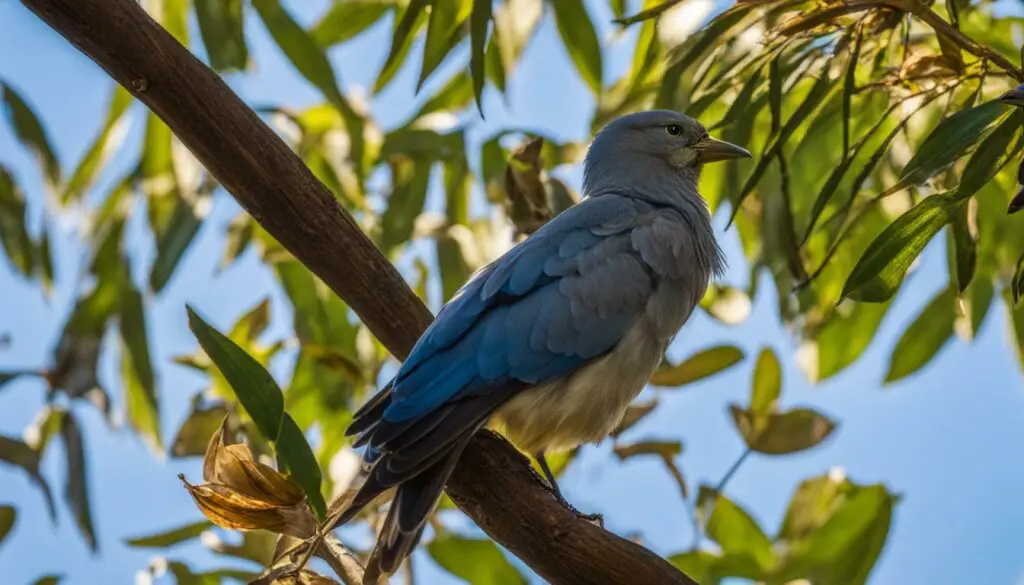
Frequency and Duration of Molting
Molting frequency and duration can vary among different bird species. Most birds undergo molting once or twice a year, typically during the spring and fall seasons. The molting process can last anywhere from 5 to 12 weeks, depending on the species and the individual bird’s health and environmental conditions. Understanding the molting patterns of your specific bird can help you provide appropriate care and support during this crucial time.
Parrots, for example, are known to have more prolonged molting periods compared to other bird species. They can experience molting cycles that last for several months, with new feathers gradually replacing old ones. This extended molting duration is a natural part of their reproductive and biological cycles. During this time, it is important to provide your parrot with proper nutrition, a stress-free environment, and regular veterinary check-ups to ensure their well-being.
| Bird Species | Molting Frequency | Molting Duration |
|---|---|---|
| Canaries | About twice a year | 5-8 weeks |
| Finches | About twice a year | 4-6 weeks |
| Budgies (Parakeets) | About once or twice a year | 6-8 weeks |
| Lovebirds | About once or twice a year | 8-10 weeks |
| Macaws | About once or twice a year | 10-12 weeks |
These are general guidelines for molting frequency and duration, and it is important to remember that individual birds may deviate from these patterns. Factors such as diet, environmental conditions, hormonal fluctuations, and the overall health of the bird can influence the molting process. Monitoring your bird’s behavior and consulting with a veterinarian can provide valuable insights into their specific molting needs and any potential health concerns.
Abnormal Molting and When to Seek Veterinary Care
Molting is a natural process that birds undergo to replace old feathers with new ones. However, there are instances when molting can become abnormal and may require veterinary care. It is important to be aware of the signs of abnormal molting and seek professional advice to ensure the health and well-being of your feathered friend.
Excessive molting is one sign that something may be amiss. If you notice that your bird is molting more frequently than the usual once or twice a year, it could be an indication of stress or an underlying medical condition. It’s important not to ignore this and consult a veterinarian for a thorough evaluation.
In some cases, abnormal molting can result in excessive bleeding from pin feathers or irregular feather growth. These are concerning signs that should not be overlooked. A veterinarian can assess the situation, provide a proper diagnosis, and recommend appropriate treatment options.
“While molting is a natural process, certain signs may indicate abnormal molting that requires veterinary care.”
Prompt veterinary care is crucial to address any underlying issues that may be affecting the molting process. By seeking professional advice, you can ensure that your bird receives the necessary treatment and support for a healthy molt. Remember, early intervention is key to preventing further complications and promoting the overall well-being of your beloved pet.
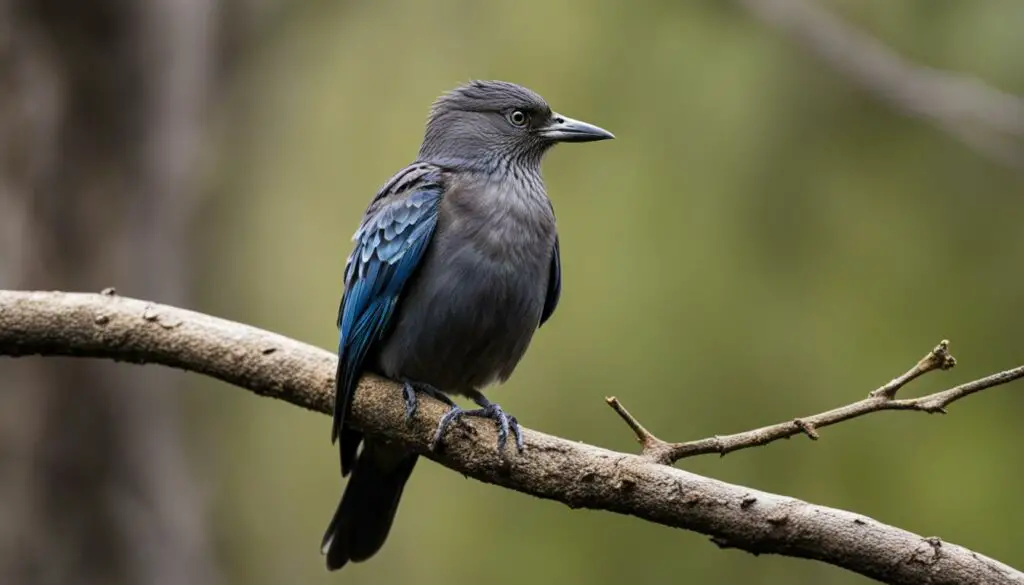
| Signs of Abnormal Molting | When to Seek Veterinary Care |
|---|---|
| Excessive molting (more than twice a year) | Consult a veterinarian for evaluation |
| Excessive bleeding from pin feathers | Seek immediate veterinary care |
| Irregular feather growth | Consult a veterinarian for diagnosis and treatment |
Molting vs. Feather Plucking
During a bird’s molting season, it is important to differentiate between molting and feather plucking. Molting is a natural process where birds shed old feathers and grow new ones, while feather plucking is an abnormal behavior where birds pull out their own feathers. Understanding the signs of each can help provide appropriate care and address any underlying causes of feather plucking.
Signs of molting include a ragged appearance, with feathers falling out and new ones growing in. Birds may also have pin feathers, which are new feathers covered in a protective sheath. Additionally, molting birds may exhibit changes in behavior such as increased restlessness or reduced activity. These signs indicate a normal molting process.
In contrast, feather plucking is characterized by birds repetitively pulling out their own feathers. This behavior can be caused by stress, boredom, or underlying health issues. Signs of feather plucking include areas of bare skin, broken or chewed feathers, and the presence of feather fragments in the bird’s cage or environment.
| Molting | Feather Plucking |
|---|---|
| Molting is a natural process | Feather plucking is an abnormal behavior |
| Feathers fall out and new ones grow in | Birds repetitively pull out their own feathers |
| Changes in appearance and behavior are normal | Bare skin, broken feathers, and feather fragments are present |
| No underlying health issues | Can be caused by stress, boredom, or health issues |
If you notice any signs of feather plucking, it is important to address the underlying cause and provide appropriate care. This may include reducing stress, providing environmental enrichment, or seeking veterinary care for any underlying health issues. Differentiating between molting and feather plucking allows for targeted care and support for your bird’s specific needs.
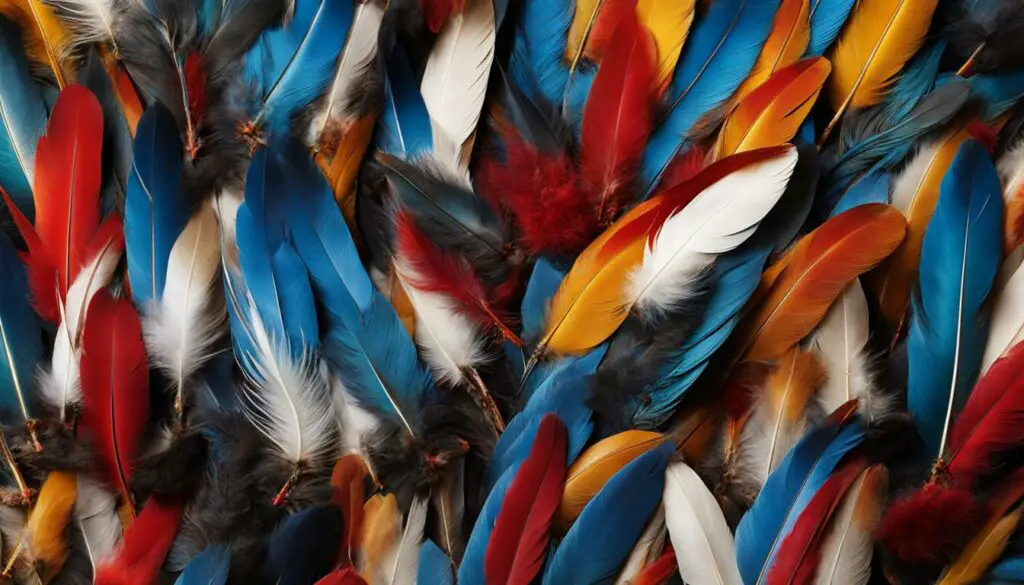
Supporting the Molting Process with Proper Nutrition
Proper nutrition plays a critical role in supporting the molting process of birds. A balanced diet that includes essential nutrients such as proteins, vitamins, minerals, and calcium is crucial for healthy feather regrowth and overall bird health during molting. Providing your feathered friend with the right nutrition can help ensure strong, vibrant feathers and a smooth molting journey.
When it comes to a balanced diet for molting birds, it is important to offer a variety of high-quality foods. This can include a mix of seeds, pellets, fresh fruits, and vegetables. Incorporating protein-rich foods into their diet is particularly beneficial for feather regrowth. Consider offering sources of protein such as cooked eggs, lean meats, or legumes to support healthy feather development.
Additionally, certain nutrients are especially important for molting birds. Vitamin A is crucial for maintaining healthy skin and feathers, while vitamin E helps protect the feathers from oxidative damage. Omega-3 fatty acids can also support feather health by reducing inflammation. Including foods rich in these nutrients – such as carrots, leafy greens, and oily fish – can help promote optimal feather growth during molting.
It is important to note that each bird species may have specific dietary requirements, so it’s best to consult with a veterinarian or avian specialist to tailor the diet accordingly. They can provide guidance on the exact quantities and types of food that will best support your bird’s molting process.
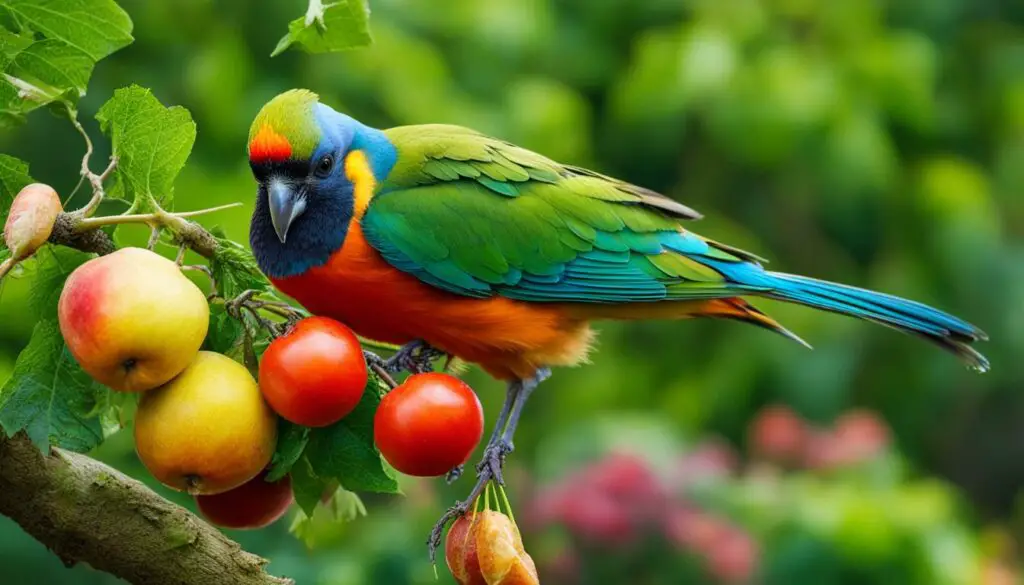
| Nutrient | Function | Sources |
|---|---|---|
| Proteins | Building blocks for feather growth | Eggs, lean meats, legumes |
| Vitamin A | Maintains healthy skin and feathers | Carrots, sweet potatoes, leafy greens |
| Vitamin E | Protects feathers from oxidative damage | Almonds, sunflower seeds, spinach |
| Omega-3 Fatty Acids | Reduces inflammation and supports feather health | Salmon, flaxseeds, walnuts |
By providing a well-rounded, nutritious diet, you can help your bird maintain optimal health and support the molting process. Remember to always provide fresh water and monitor your bird’s appetite and overall condition. With the right nutrition, your feathered friend will have a successful molting season and grow beautiful, healthy feathers.
Feather Health and General Bird Care
Feather health is crucial for the overall well-being of birds. Proper grooming and bathing routines play a significant role in maintaining healthy feathers. Regular preening helps birds keep their feathers clean, aligned, and free from debris. This natural behavior stimulates the oil gland at the base of each feather, allowing birds to spread oil and condition their plumage for optimal health.
Bathing is another important aspect of feather care. It helps remove dust, allergens, and excess oil from the feathers. While some birds enjoy splashing in a shallow dish of water, others prefer misting with room-temperature water. Both methods provide essential moisture and help birds maintain the integrity of their feathers. However, it’s important to note that not all birds enjoy bathing, so it’s essential to understand the preferences of your feathered friend.
“Proper grooming and bathing routines play a significant role in maintaining healthy feathers.”
Grooming and Feather Health Tips:
- Provide a shallow dish or bird bath for bathing, or mist your bird with room-temperature water to simulate rain showers.
- Ensure the bathing/misting water is clean and free from any chemical additives.
- Offer a variety of perches with different textures to help birds naturally file their nails and maintain beak health.
- Regularly observe your bird’s plumage for signs of feather abnormalities, such as discoloration, damage, or excessive molting.
Giving attention to feather health not only promotes physical well-being but also supports a bird’s mental and emotional state. Healthy feathers allow birds to maintain their body temperature, glide through the air, and engage in intricate courtship displays. By incorporating regular grooming and bathing into your bird’s care routine, you can contribute to their overall feather health and provide them with a comfortable and vibrant life.
| Grooming Tips: | Feather Health Benefits: |
|---|---|
| Preening feathers to remove dirt and debris | Keeps feathers clean and aligned |
| Spreading oil from the oil gland for feather conditioning | Enhances water resistance and feather flexibility |
| Bathing or misting to remove dust and excess oil | Prevents feather matting and maintains feather luster |
| Offering perches with different textures | Helps naturally file nails and maintain beak health |
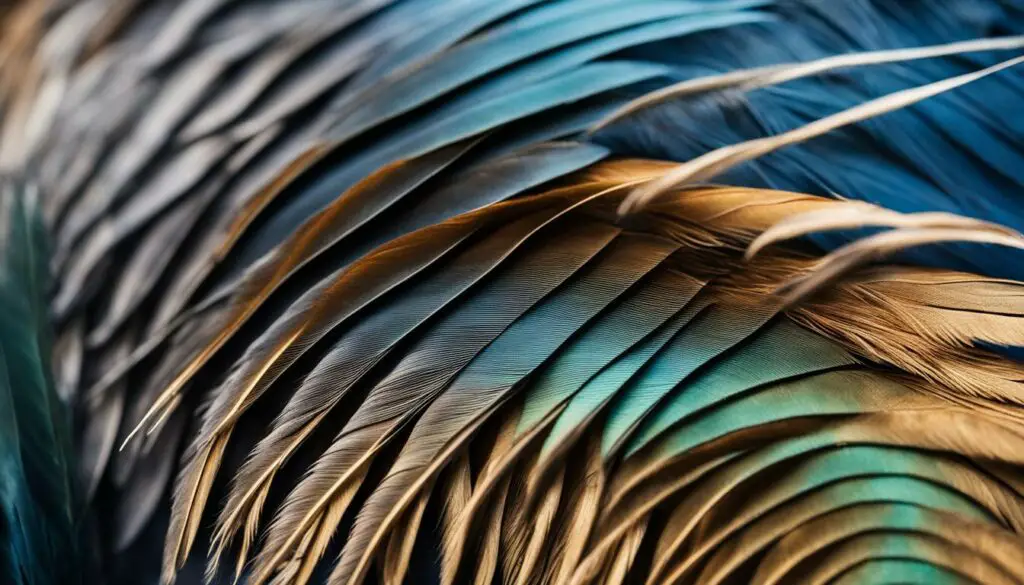
Common Concerns During Molting
During the molting process, birds may experience several common concerns that require attention and proper care. These concerns include feather breakage, weakened immune system, and increased susceptibility to infections. Understanding and addressing these issues can help ensure a smooth and healthy molting journey for your feathered friend.
Feather breakage is a common concern during molting. As new feathers grow in, they are fragile and susceptible to breakage. Birds may accidentally damage their feathers while preening or through regular activities. It is important to provide a safe and comfortable environment for your bird during molting, minimizing potential hazards or rough surfaces that could cause feather breakage.
A weakened immune system is another concern that birds may face during molting. The process of growing new feathers requires a significant amount of energy and nutrients, which can temporarily affect the immune system. During this time, it is crucial to ensure that your bird has a balanced diet and receives proper nutrition to support overall health and immune function.
“Proper nutrition and a stress-free environment are essential for supporting a healthy molting process and minimizing common concerns.”
In addition to a weakened immune system, birds may become more susceptible to infections during molting. As new feathers grow in, the skin beneath can be more vulnerable to bacterial or fungal growth. Maintaining good hygiene by regularly cleaning perches and cages, as well as providing proper nutrition, can help reduce the risk of infections.
Summary
- Feather breakage is a common concern during molting, and providing a safe environment can help minimize this issue.
- A weakened immune system is temporary during molting, and a balanced diet is crucial to support overall health.
- Molting birds may be more susceptible to infections, so maintaining hygiene and providing proper nutrition is important.
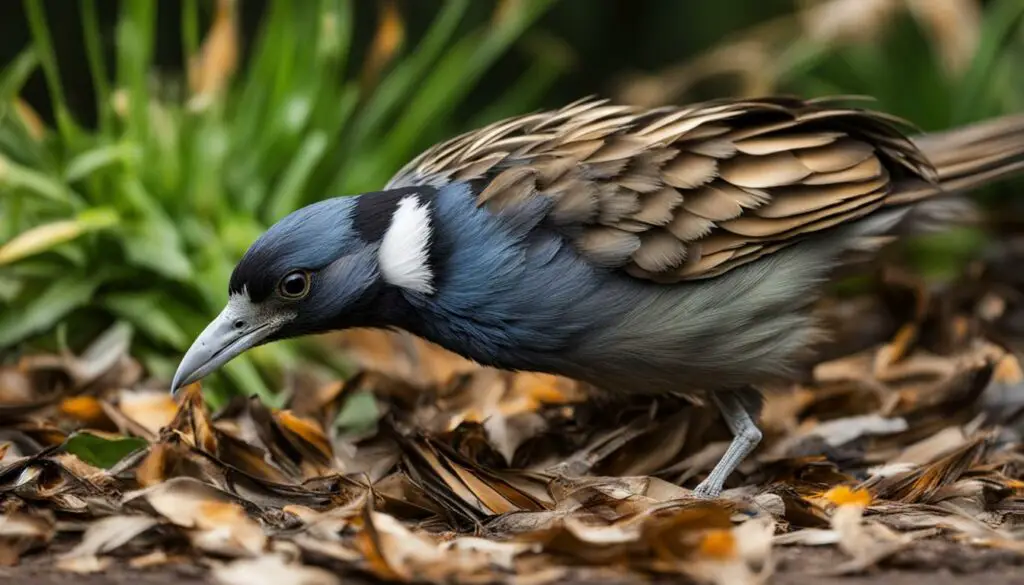
Table: Common Concerns During Molting
| Common Concerns | Description |
|---|---|
| Feather breakage | Fragile new feathers may break easily during molting, especially if the bird encounters rough surfaces or hazards. |
| Weakened immune system | The energy and nutrient demand for feather growth can temporarily affect the bird’s immune system during molting. |
| Increased susceptibility to infections | Growing feathers create an environment where bacteria and fungi can thrive, making birds more prone to infections during molting. |
Environmental Factors and Stress Reduction
Creating a stress-free environment for your molting bird is crucial for promoting healthy feather regrowth and overall well-being. Environmental factors play a significant role in reducing stress and supporting the molting process. By considering these factors and implementing appropriate measures, you can provide a calm and nurturing environment for your feathered friend.
One important factor to consider is temperature control. Birds are sensitive to temperature changes, so it’s essential to maintain a stable and comfortable temperature in the room where your bird resides. Avoid exposing your bird to drafts, as they can cause stress and interfere with feather regrowth. Additionally, providing a comfortable perch for your bird to rest on can help reduce stress and promote a sense of security.
Proper lighting is another critical environmental factor to consider. Birds rely on natural light cues for their daily routines, including molting. Ensure that your bird has access to natural sunlight or provide a full-spectrum light source that mimics natural daylight. This can help regulate your bird’s internal clock and support a healthy molting process.
| Environmental Factors for Molting Birds | Stress Reduction Measures |
|---|---|
| Adequate temperature control | Avoid exposure to drafts |
| Proper lighting | Provide access to natural sunlight or full-spectrum light |
| Comfortable perches | Offer a variety of perches for resting and perching |
| Minimize stressors | Avoid loud noises and sudden changes in routine |
Minimizing stressors is crucial during the molting process. Loud noises, sudden changes in routine, and other stressful situations can negatively impact your bird’s overall well-being and slow down feather regrowth. Keep your bird’s environment calm and predictable, providing a routine that offers a sense of security. Minimize exposure to loud noises and disturbances that can cause stress.
By considering these environmental factors and implementing stress reduction measures, you can create an optimal environment for your molting bird. Remember to observe your bird’s behavior and adjust their environment accordingly to ensure they are comfortable and supported throughout the molting process.
Importance of Regular Veterinary Check-ups for Molting Birds
Regular veterinary check-ups are essential for the overall health and well-being of molting birds. During the molting process, birds experience significant physiological changes, and a comprehensive health assessment by a veterinarian can help ensure that these changes occur smoothly and without complications. Veterinary check-ups provide an opportunity to monitor the bird’s feather health, detect any underlying health issues, and provide appropriate treatment or dietary recommendations.
A detailed molting bird health assessment typically includes a thorough physical examination, which may involve checking the bird’s body condition, skin, feathers, and overall appearance. The veterinarian will also assess the bird’s diet, ensuring that it is nutritionally balanced and meets the specific needs of the molting process. Additionally, the veterinarian may perform diagnostic tests, such as blood work, to evaluate the bird’s overall health and detect any underlying medical conditions that could affect the molting process.
Veterinary check-ups for molting birds are particularly important for species that undergo more complex molts or have specific dietary requirements. Certain birds, such as parrots, may have unique molting patterns and nutritional needs that necessitate specialized care. By scheduling regular check-ups with a veterinarian experienced in avian medicine, bird owners can ensure that their feathered companions receive the appropriate care and support during the molting season.
| Benefits of Regular Veterinary Check-ups for Molting Birds |
|---|
| 1. Early detection of underlying health issues |
| 2. Monitoring feather health and regrowth progress |
| 3. Tailored dietary recommendations for optimal nutrition |
| 4. Preventive care to minimize molting complications |
| 5. Peace of mind for bird owners |
Scheduling regular veterinary check-ups is a proactive approach to bird molting season care and can contribute to the overall well-being and longevity of your feathered friend. By partnering with a knowledgeable veterinarian, you can ensure that your bird’s molting process is supported by the best possible care and attention. Remember, regular veterinary check-ups are an important part of responsible bird ownership and are vital for the continued health and happiness of your molting bird.
Conclusion
In conclusion, providing proper care during the bird molting season is crucial for maintaining feather health and overall well-being. By following expert tips and guidelines, you can support your feathered friend through this natural process.
Remember to provide a balanced diet, including essential nutrients such as proteins, vitamins, minerals, and calcium. Hydration is also vital, so make sure to offer fresh water and consider misting your bird with room-temperature water to soothe itchiness.
Creating a stress-free environment with stable temperature, adequate lighting, and comfortable perches will help reduce stress and support feather regrowth. Minimize exposure to potential stressors to maintain a calm and nurturing environment.
Lastly, regular veterinary check-ups are crucial for monitoring your bird’s feather health and overall well-being. Veterinarians can assess any underlying health issues and provide appropriate treatment or dietary recommendations. By following these tips, you can ensure a successful molting process and help your bird grow healthy, vibrant feathers.
FAQ
What is molting in birds?
Molting is a normal process in which birds shed old feathers and grow new ones.
How often do birds molt?
Most birds molt once or twice a year, usually in the spring and fall.
What are the signs that a bird is molting?
Some signs of molting include a ragged appearance, feathers falling out, and the growth of new feathers.
How long does the molting process last?
The molting process can last anywhere from 5 to 12 weeks, depending on the species and individual bird.
How can I support my bird during molting?
You can support your bird during molting by misting it with water, providing a quiet area for rest, and avoiding petting while pin feathers are growing in.
What should I feed my bird during molting?
Feeding your bird fresh cucumber and increasing its protein intake through egg food or hard-boiled egg yolks can help support feather growth during molting.
How do I differentiate between molting and feather plucking?
Molting is a natural process, while feather plucking is an abnormal behavior. Molting involves the shedding of old feathers and the growth of new ones, while feather plucking is when birds pull out their own feathers.
When should I seek veterinary care for a molting bird?
If your bird is molting more than twice a year, experiencing excessive bleeding from pin feathers, or showing unusual feather growth, it is recommended to seek veterinary care.
What is the importance of proper nutrition during molting?
Proper nutrition is crucial for supporting feather regrowth and overall bird health during molting. A balanced diet with essential nutrients is necessary for healthy feather growth.
What environmental factors should I consider for a molting bird?
Providing a stress-free environment with stable temperature, adequate lighting, and comfortable perches can help support a molting bird’s well-being.
How often should I take my molting bird to the vet?
Regular veterinary check-ups are important for monitoring a molting bird’s health and well-being. Routine check-ups help ensure your bird is receiving optimal care during the molting process.

